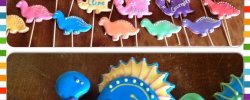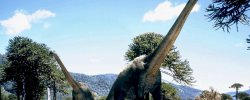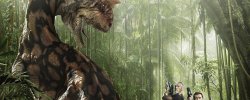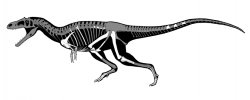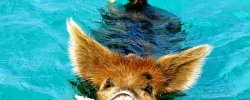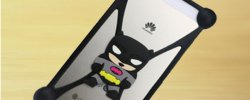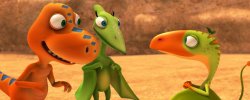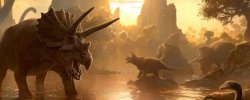Photographs
 Open the category of ornitodes from the historically second described terrible lizard (the first was the megalosaurus). Scientists often drafted dinosaur names on eye-brows. Latin Iguanodon Transmitted as a "Iguana" because of the similarity of teeth to the above-mentioned lizard. I guess the iguanosuba was well adapted to the environment, so it spreads almost around the globe!
Open the category of ornitodes from the historically second described terrible lizard (the first was the megalosaurus). Scientists often drafted dinosaur names on eye-brows. Latin Iguanodon Transmitted as a "Iguana" because of the similarity of teeth to the above-mentioned lizard. I guess the iguanosuba was well adapted to the environment, so it spreads almost around the globe!
Visit card
| Rod. | Family | Unit | We're gonna have to go. | Class | Type |
| Iguanodon | Iguanodontides |  Excessive Excessive | Hoards | ||
| Long before, m | Up to, m | Weight to | Live, ml.n. | Habitat | Who's described, year |
| 10 | 126-125 (r) | Belgium | Gideon Mantell, 1825 |
Time and place of existence
There were Iguanodons at the beginning of the meal period, about 126 million years ago. The territory of modern Belgium has been distributed. Fragmental residues that may belong to this species are also found in some other European countries. Types and history of detection
Types and history of detection
So far, one species is generally recognized, respectively, as model: Iguanodon bernissartensis. Some other discussions are under way, due to doubt or small quantities of material.
England is not only a home of creative innovations. There were important paleontological discoveries. The first bones of Iguanodon were found in Sassex Gideon Mantel. His wife Mary worked hard. Mantell published a description in 1825.
Zuba Iguanodona (view Iguanodon anglicus) from Mantella's originals, Notice on the Iguanodon, a newly discovered fossil reptile, from the sandstone of Tilgate forest, in Sussex. Iguana jaws and teeth were painted in the lower part for comparison.
 In 1878, there is an important opening of a whole iguanodon cemetery in the garden of the mine near the Belgian place of Bernissar. 322 meters deep. A total of 38 well-established skeletons, some of which are almost complete. Iguanodontid's research has made serious progress. They are now posted at the Royal Institute of Natural Sciences of Belgium. New developments are recurring throughout the world.
In 1878, there is an important opening of a whole iguanodon cemetery in the garden of the mine near the Belgian place of Bernissar. 322 meters deep. A total of 38 well-established skeletons, some of which are almost complete. Iguanodontid's research has made serious progress. They are now posted at the Royal Institute of Natural Sciences of Belgium. New developments are recurring throughout the world.
Body building
The body of the ornitopod reached 10 metres. Height to 5 m. Iguanodon's got three tons.Moving mostly on four legs, but he could walk two. On the feet of the back limbs, three thick fingers.
The front limbs are quite developed. In fact, the mood of the bruises is kind of human. Three middle fingers were strong and ended up with flat copy claws. They were used to support movement. The fifth thumb was a man's thumb to seize objects (e.g. when the iguanodone inclined the winds or eats the stalks). A little "large beast." But the most amazing finger is the first. There were no intermediate joints on it, making a sharp chip about 20 cm long! Most likely his primary function is a protective weapon against predators. Iguanodon may have taken rivals in the herd or used for special food.


